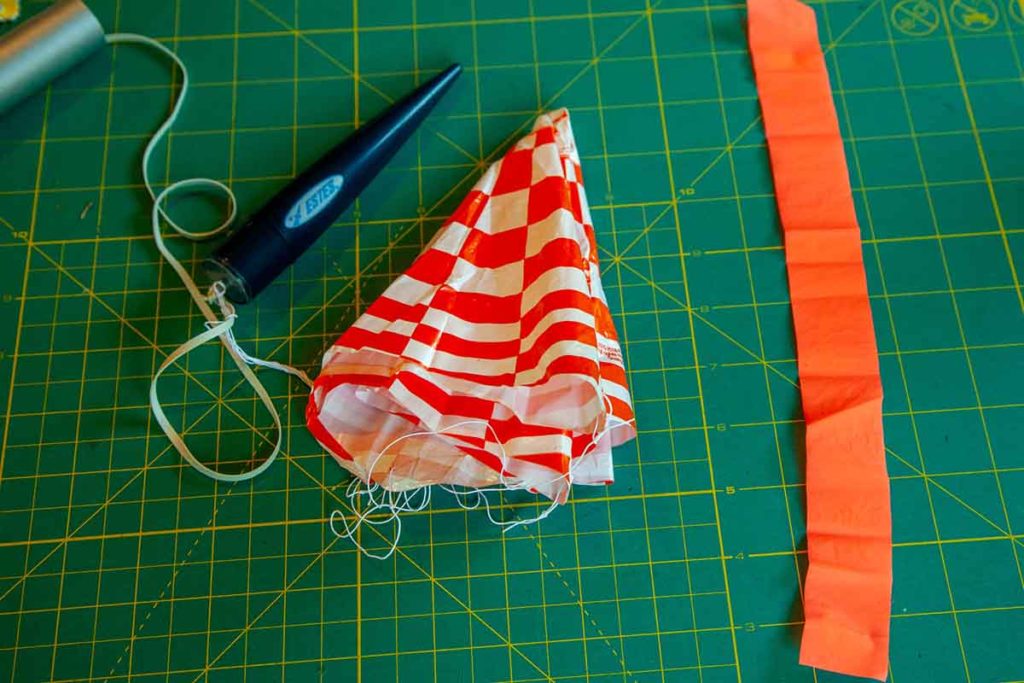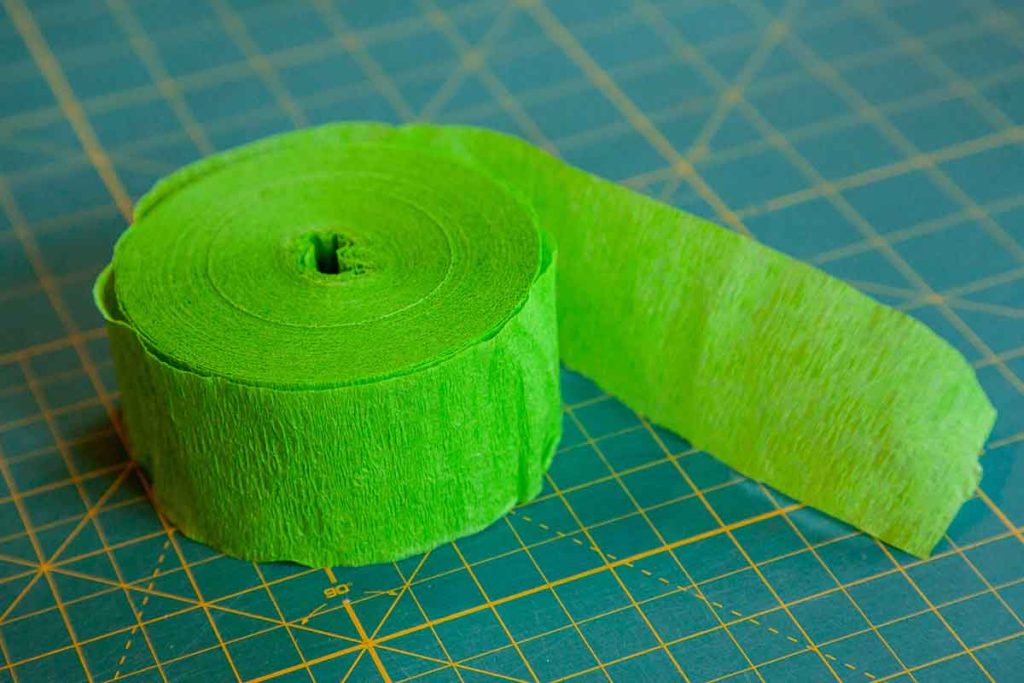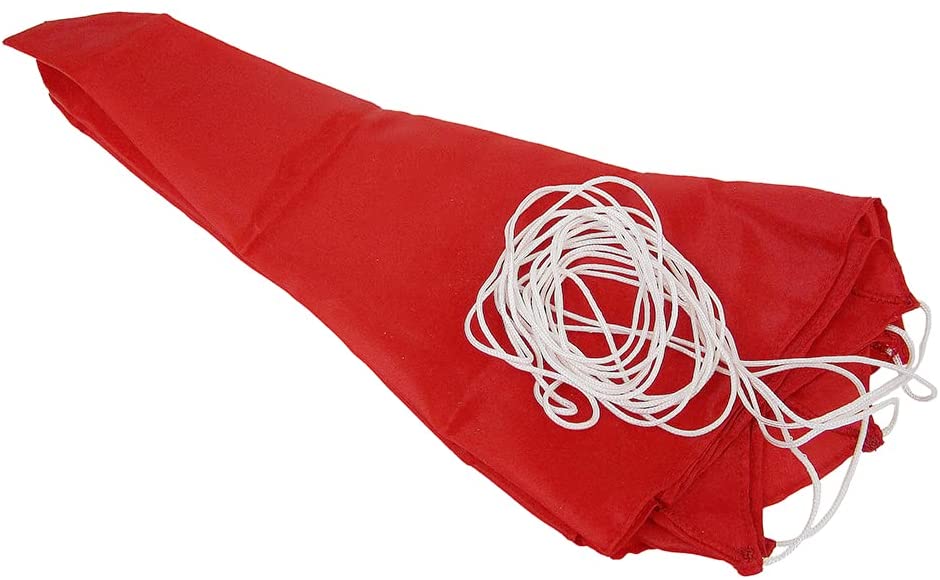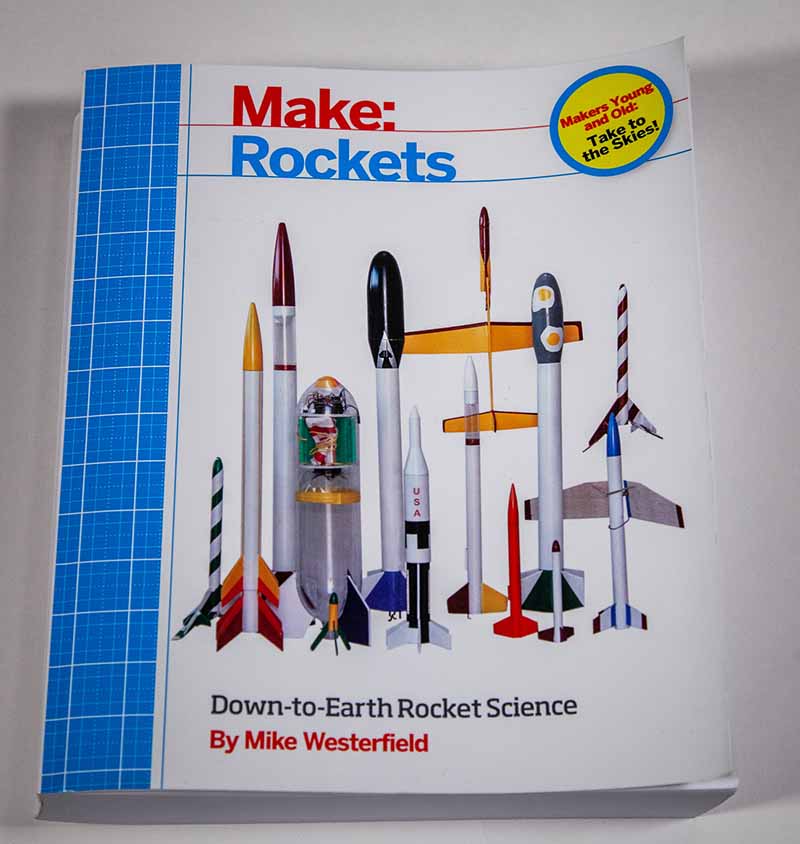
When I bought my first rocket as a kid, I was honestly a little disappointed when I found out it didn’t come with a parachute. All it had was a skinny little ribbon. Surely this couldn’t be right.
Why did this thing that flew hundreds of feet in the air, an actual rocket, not come with a parachute? There was no way this was going to work right. I was convinced my rocket would get destroyed when it hit the ground. Even my little army soldiers had parachutes.
So it turns out, the manufacturer actually knew a couple things about using a streamer over a parachute. For that rocket that I first launched many years (*ahem* decades) ago, a streamer was actually the right choice. But as an adult (now teaching my kids about rockets), I have some deeply seeded questions. Why do some rockets come with streamers and others with parachutes? Does a streamer really do anything?
Streamers vs. Parachutes

The most common way to recover a rocket is, in fact, with a parachute. When the question arises—should I use a streamer or a parachute?—the real question is how fast should your rocket fall? While there is no one right answer to this, it is commonly accepted that a low-powered rocket should descend at around 11-15 feet/sec or 8-10 miles/hr.
The type of rocket you fly (and therefore the way that rocket will fall back to earth) will determine what kind of recovery system you should use. So let’s take a minute an look at the different kinds of recovery options.
What is a Model Rocket Streamer?
A streamer is a ribbon used to slow a rocket as it descends and is made of thin plastic, crepe paper, or mylar. Streamers are used on lightweight or high-flying rockets, or on rockets launched in a small field. Rockets that weigh less than 30g or 1oz often use a streamer instead of a parachute.
How to Make a Model Rocket Streamer
When making a streamer, it’s important to remember that the purpose of any recovery system is to create drag to help slow the rocket during descent. This rule will help guide the principals of choosing and setting up your streamer.
Generally, the size of a streamer should be at least 10x longer than it is wide. This is just a minimum and not the maximum. Most Estes rockets that come with a streamer are often as much as 30x longer, so don’t feel like you need to limit yourself to the 10x rule.
When connecting your streamer to the rocket, it may be tempting to tie the streamer in the middle. Don’t do it! A streamer folded in half does not create as much drag as one long streamer.


By folding it in half, you effectively create two smaller streamers. The air flow over one streamer interferes with the air flow over the other and creates less drag (remember when I said it’s all about creating drag?). It is better to have one long streamer.
Materials to Use for a Streamer
When picking out a material for a rocket streamer, remember that stiffer is better as it will create more drag. A great low-cost option is to cut a long strip from an old mylar balloon (you know, that fancy balloon you bought at the grocery store for your kids birthday that seems to last forever…)

After you cut it into a long strip, fold the mylar to make as many creases as you can. A crinkled material has more drag than smooth material. The good thing about using mylar is that it’s coated in metal which makes the material stiffer, and it’s usually brightly colored and shiny. This will make it easy to see during descent as it flashes in the sunlight.
Another great (and super cheap) option is crepe paper. For those of you dads out there that are not super crafty and don’t know what crepe paper is (I honestly didn’t know this is what it was called), it’s the crinkly party streamers you can get at a dollar store.
While this isn’t likely to last more than a couple launches, it’s super cheap (have I mentioned you can get this at the dollar store?) and a single roll will last forever. The other really good news is that it comes pre-wrinkled so you don’t have to crumple or fold it.
Materials to Use for a Parachute
I’m not going to insult your intelligence by defining what a parachute is. What I will tell you is that parachutes are typically made out of thin plastic or mylar. Usually what you get out of a kit will be a thin plastic parachute with strings already tied and ready to go. Estes makes a couple you can find online or at your local hobby or craft store. I recommend if you ever have an old rocket that’s… ready to pass on, keep the parachute (and while you’re at it, the nose cone).
If you plan to launch a bigger rocket with a heavier payload then it’s time to upgrade your parachute. You’re going to want to use a parachute made from some ripstop nylon (they use this stuff on parachutes for people). Estes makes a nylon parachute that you can get here:
If you want to make your own, you can buy some nylon at your local craft store for pretty cheap (even a half yard will be more than you’ll ever need). As tempting as it is to put a link to some ripstop nylon from Amazon, just go to your local craft store. It will be a lot cheaper than buying it online.
How to Choose the Right Size Parachute for a Model Rocket
So you need to buy/make a parachute for your rocket. How big does it need to be? While there is a whole lot of math you can do to determine the right size (and maybe someday you’ll get into this. Or maybe your kid is learning calculus in high school and you can make them do all the dirty work), the easiest way is to consult a chart (and let other really smart people figure this out for you).
The first thing you’ll need to do is weigh your rocket. But wait. Do you weigh the rocket with or without the motor? The weight of the rocket during descent is not the same as a rocket with no motor, and it’s not the same as a rocket with an unused motor. So how do you figure this out?
The easiest and most practical way is to weigh your rocket with a spent engine. I don’t know about you, but I don’t typically save the engines once they’re done.
Another option is to weigh the motor you’re going to use, subtract the weight of the propellant (for Estes engines, you can find the technical specifications including the propellant weight on their website). That’ll get you pretty close to the weight of a spent engine.
The last option (and the lazy bum in me likes this), is to weigh the rocket with an engine, and weight the rocket without the engine. The final weight should be somewhere in the middle. Since we’re dealing with low power rocketry (I wouldn’t advise this going into mid or high power rocketry), this will be good enough.
Then consult the handy chart to find out what size parachute to use:
| Parachute Size (diameter/in) | Minimum Weight (oz/g) | Maximum Weight (oz/g) |
| 6.25″ | 0.4 oz/12 g | 0.7 oz/20 g |
| 9″ | 0.9 oz/25 g | 1.5 oz/42 g |
| 12.5″ | 1.7 oz/49 g | 2.9 oz/81 g |
| 15″ | 2.5 oz/71 g | 4.1 oz/117 g |
| 18.75″ | 3.9 oz/110 g | 6.4 oz/183 g |
| 24″ | 6.4 oz/ 181 g | 10.6 oz/299 g |
For any sizes that overlap, and you have two possible sizes for parachutes, you have a couple options based on the desired speed of recovery. If you need a faster descent (you’re launching on a smaller field, there’s some wind, or there are some nearby trees), then use the smaller parachute. If you want a slower descent (big field, calm weather, you’re taking bets on whose rocket can stay in the air the longest), then use a bigger parachute. If you’re unsure, it’s always safer to size up.
Diving Deeper into Model Rocketry
If you find yourself getting seriously into rocketry and you want to learn more, check out Make: Rockets by Mike Westerfield. Make is an awesome resource for so many things STEM-related and this book will give you everything you need to know about low-powered rocketry including compressed air and water rockets.
This book is no-joke and is about 1½ inches thick. This book has become my rocket bible and is a great resource (and no, Make did not ask me to say any of this).
Recent Posts
Flying rockets is super fun. My kids and I have a blast launching them into the sky and chasing them down. We love the idea of putting in a stronger engine each time and seeing how high we can...
The day has come. You bought your rocket kit, got it all glued up, painted, and ready to go. You’re now an expert on rocket engines (mostly because you read all about them here), you bought...



